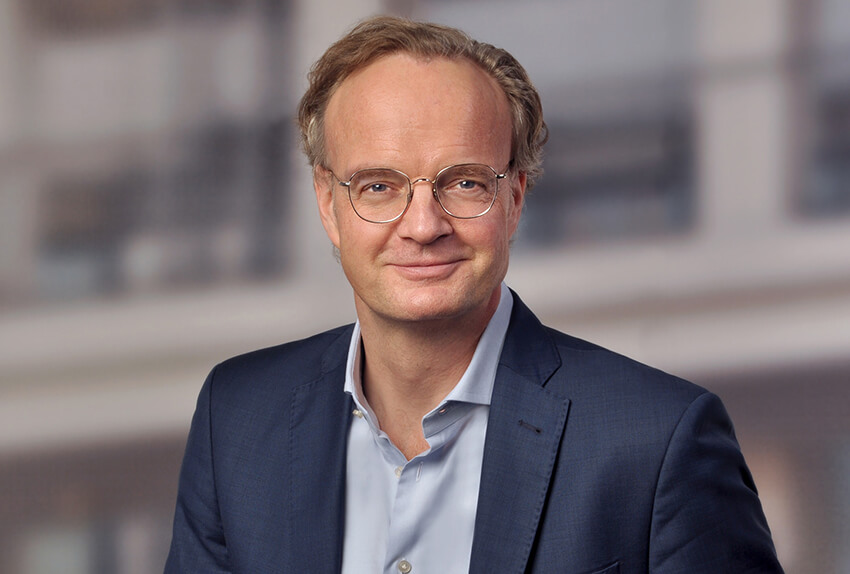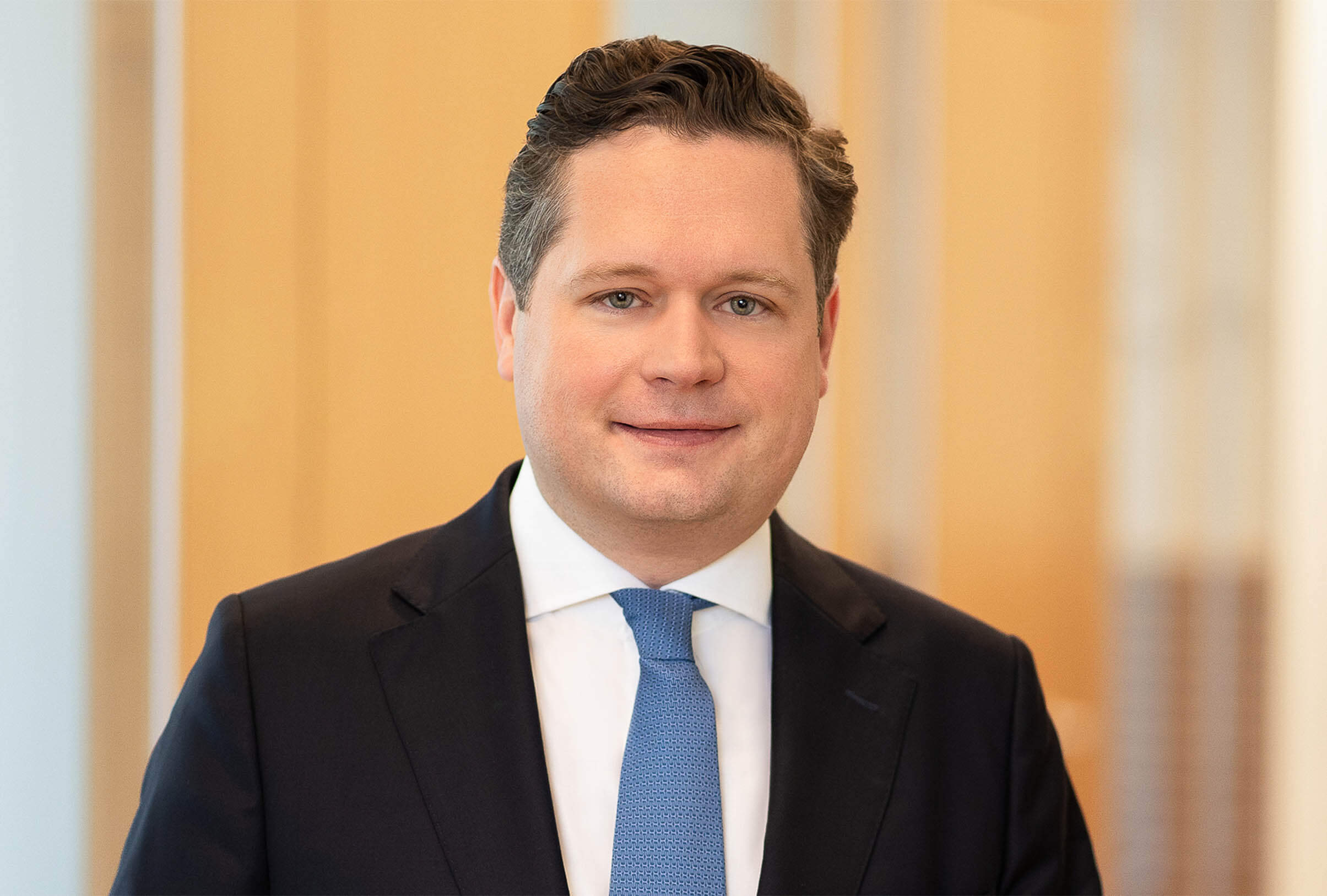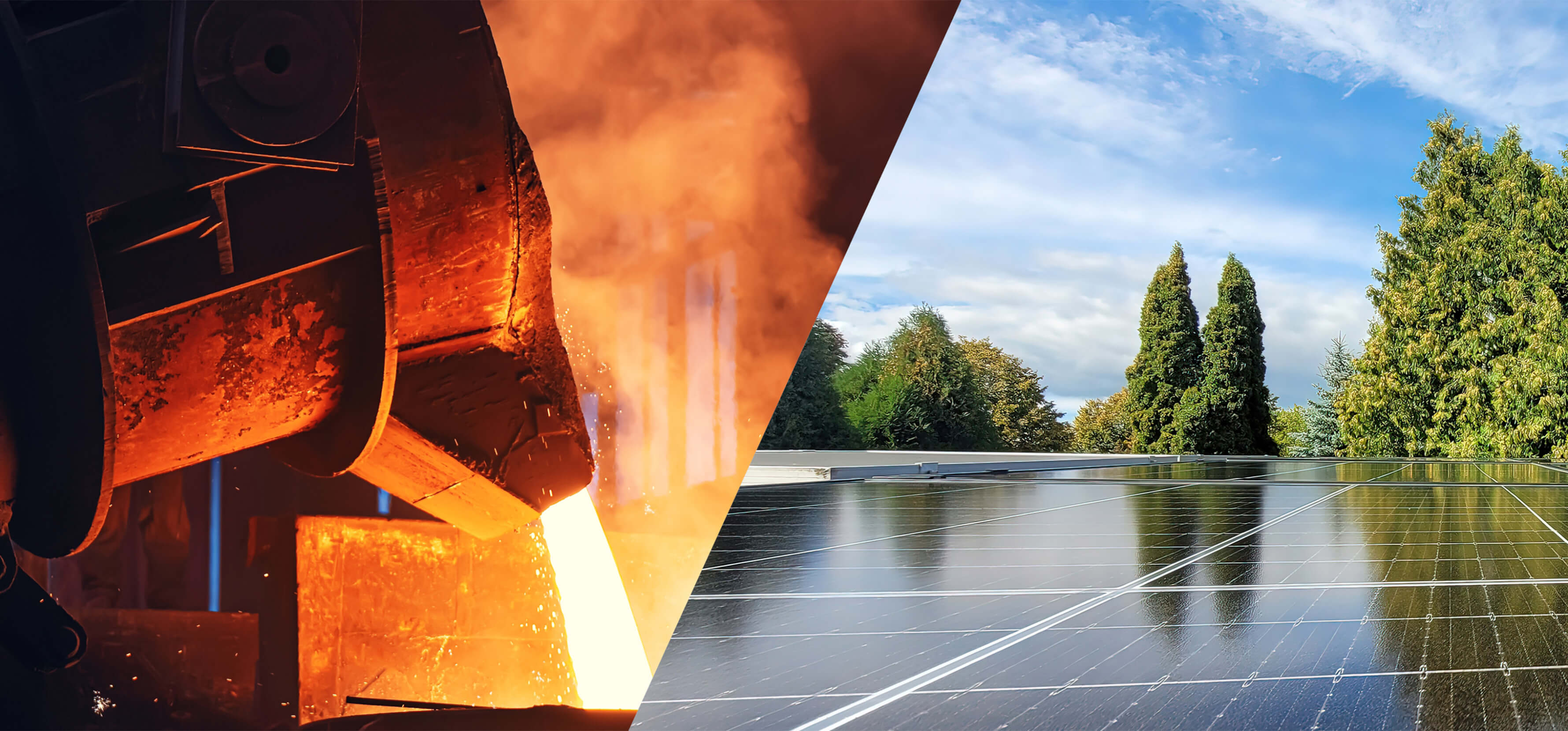Partner Munich
"The transition to green energy generation (with an 80% target by 2030) and digitalised Industry 4.0 continue to drive investment and M&A activities in these important sectors for Germany and Europe."
Introduction
Energy transition and digital infrastructure – can an old dog learn new tricks?
The key issues currently impacting the energy and infrastructure sectors are not new, but the means of addressing them increasingly are. The transition to green energy generation (with an 80% target by 2030) and digitalised Industry 4.0 continue to drive investment and M&A activities in these important sectors for Germany and Europe.
The digital transformation not only concerns issues relating to the digitalisation of private economic life, but also the healthcare sector and administration. New technologies are entering the market and creating the need to finance changes, the most prominent example being artificial intelligence (“AI”). The integration of new technologies into existing infrastructure or infrastructure that needs to be retrofitted is also exciting from a legal perspective.
The energy sector is still in a dynamic transformation phase, particularly due to market-based incentives to make energy generation and consumption more flexible, sector coupling and the associated diversification as well as increased efficiency through digitalisation, which is also supported by the corresponding regulatory framework at EU level.
In the digital infrastructure sector, there are currently M&A opportunities within the consolidation of the fibre optic sector in addition to data centre investments.
The outcome of the Bundestag elections in February 2025 is also important for the market development of investments in infrastructure projects. However, further legal work can and will be done on sales and acquisition processes, and greater emphasis must be placed on careful (regulatory) due diligence and suitable closing mechanisms and options for the parties.
Long-term investors will continue to deal with the indirect effects of global climate change, which are currently difficult to assess and have an impact on the sectors. These include the development of CO2 prices as part of the European and national emissions trading system, which will be expanded from 2027 to include emissions from buildings, industry and road transport. In addition, electricity prices and their medium and long-term developments are particularly important.
The following article provides an overview of the trends in the German M&A market for renewable energy and digital infrastructure that can be derived from the currently known framework conditions for 2025.
Market Trends 2025
Renewable Energy
In the field of renewable energy, including the associated infrastructure, various factors can be identified that have an impact on the different stages of the value chain – starting with energy generation from renewable energy (wind, solar and geothermal energy), through energy storage and its use concerning energy conversion (notably green hydrogen and heat transition) to consumption (energy-intensive industry, e-mobility).
The fluctuation in energy generation from renewable energy, the associated occurrence of negative prices and price peaks on the spot market and the resulting need for flexible solutions and controllable generation capacities are obvious.
In this respect, a continuation of the trends from 2024 can be expected, but important political decisions are due in 2025 which could set new priorities and should lead to improvements in the grid connection for flexible loads – and likely also for energy storage systems.
Solar & Wind
In the solar energy field, a significant increase of around 16 gigawatts was recorded in 2024, and a further increase in installed capacity is expected in 2025. Meanwhile, the expansion of rooftop systems on residential buildings is declining. The industry also expects the focus of new solar installations to be on ground-mounted systems in 2025. So-called Agri-PV systems (i.e. solar systems that allow the land to be used for agricultural purposes) are being planned increasingly.
The market has calmed down in the context of co-development structures and M&A transactions for solar development projects. Market prices for greenfield projects have generally fallen, particularly before the ready-to-build (“RtB”) status is reached and are currently at a stable level. Development risks (in particular regarding construction and planning law-related approvability and grid connection) are often reflected in M&A deals through corresponding earn-out purchase price structures or replacement obligations (in portfolio transactions) and are generally borne by the developer. In addition to project M&A, the trend towards consolidation in the German project developer market will continue in 2025. Several deals are in the starting blocks.
Key contacts
"In M&A transactions, there is continued interest in new development projects (greenfield) and existing wind farms with repowering potential."
Onshore wind energy installations are expected to increase in the coming years. In EEG tenders in 2024, a total of 10.9 GW were awarded, whereas in 2023 only 6.3 GW were awarded. The expected expansion also includes wind turbines that replace old, decommissioned wind turbines as part of repowering. In M&A transactions, there is continued interest in new development projects (greenfield) and existing wind farms with repowering potential. In designated wind priority areas, several developers often compete for land ownership. The trend towards development cooperation between developers seen in 2024 will therefore continue. In the offshore wind sector, the targets of the Offshore Wind Energy Act (WindSeeG) of 30 GW for 2030, 40 GW for 2035 and 70 GW for 2045 must be taken into account, as well as the need for investment in transport/logistics and offshore energy infrastructure. The construction of converters and specialised ships that enable grid connection represents a market worth billions.
Energy Storage/BESS
Energy storage systems, in particular battery energy storage systems (“BESS”), are indispensable for the integration of renewable energy into the energy system. They help balance out the associated fluctuations in energy generation and consumption and ensure a secure and stable supply of energy. By 2023, around 35.8 GW of battery storage systems had already been installed in Europe and, according to current industry assessment (SolarPower Europe), an average annual increase of 30-40% is expected for the 2024-2025. As compelling asset class investors can hardly imagine the energy system without them – the question is not so much whether, but how: standalone vs. co-location, behind-the-meter vs. in-front-of-the-meter, grid-connected vs. off-grid etc. – flexible contract design is therefore essential.
"Energy storage systems, in particular battery energy storage systems (“BESS”), are indispensable for the integration of renewable energy into the energy system."
The German market continues to be of interest to foreign investors as well, evidenced by the takeover of Kyon and the VSB Group by TotalEnergies, the takeover of TerraOne by S4 Energy (“CCI”) and the takeover of Juniz/Greenrock by EQT. Further investments in German companies were made below the threshold of the controller value, such as the investment by Nature Infrastructure Capital and X-ELIO in the battery storage specialist ECO STOR.
Regarding Germany, the peculiarity that the so-called exclusivity principle, according to which systems for generating electricity from renewable energy sources may not operate with grey electricity from the grid, will probably remain in place in 2025 and continues to have economically nonsensical effects on battery storage models that are used in various areas of application (so-called multi-use or multivalent storage operation). Legislative projects were also launched in 2024 that have a significant impact on investment decisions (EnWG and EEG amendment, BauGB amendment, reform of energy tax law) and influence both CAPEX and OPEX decisions.
Grid fees are another important component – particularly the question of grid fee exemption after 2027 and the question of a comprehensive reform of grid fees. However, the bottleneck for many BESS projects is currently the grid connection, so the need for flexible grid connection agreements and, if necessary, the possibility of overbuilding grid connection points becomes particularly clear here.
Hydrogen
"Hydrogen, including its derivatives, remains the energy source of the future for heavy industries and hard-to-abate sectors, i.e. areas where electrification is not an option. "
Hydrogen, including its derivatives, remains the energy source of the future for heavy industries and hard-to-abate sectors, i.e. areas where electrification is not an option. The use of carbon capturing is not yet economically viable here according to the current state of the art, but such technologies could nevertheless be an option for a transitional period. This is not least because CO2 may also represent a commodity in the future if it is used to produce alternative fuels (eFuels), for example. This requires CO2 to be recognised as sustainable in regulatory terms.
The first steps towards a green transformation have been taken in the industrial and transport sectors, particularly in the areas of heavy goods transport, shipping and air transport. The steel industry (so-called green steel) should also be mentioned. Further investments are also expected here in the short term in 2025. In view of the investment costs and the existing risks, co-operation agreements are a popular instrument for securing influence in upstream and downstream markets in addition to acquisitions.
In addition to its use in industry and transport, hydrogen’s use as a storage medium should be emphasised. As a long-term storage medium, hydrogen enables a secure energy supply during dark doldrums, which is why politicians are also focussing on this area. In this respect, further investments in hydrogen-capable gas-fired power plants can be observed on the market. At present, however, there is still a lack of the corresponding transport infrastructure, which will only offer an efficient and cost-effective supply of hydrogen through pipelines from 2032 with the core network. Private investors are also required here, as the core network is also to be largely financed by the private sector.
Heat
The heating sector was already an interesting sub-sector in the context of transaction practice in 2024. The Heat Planning Act established a stable regulatory framework that encourages all municipalities, the larger ones first, to systematically plan the future heat supply in their respective municipal areas. A number of co-operations between public and private players have already been established in recent years. This trend is expected to continue in 2025 in view of the heat walls initiated by the regulatory authorities. Investment opportunities exist particularly in the areas of district heating and heating networks. The need for investment on the part of the responsible municipal utilities is immense. Even medium-sized centres are faced with costs in the mid three-digit million range.
"It can also be observed that innovative solutions and sector coupling are increasingly in demand here, such as the use of waste heat from industrial processes or data centres to provide heat."
It can also be observed that innovative solutions and sector coupling are increasingly in demand here, such as the use of waste heat from industrial processes or data centres to provide heat.
EV Charging
2024 was a difficult year for investment in e-mobility. The insolvency of the developer Numbat, whose business model envisaged equipping retail spaces with fast chargers and battery storage systems, highlights the existing challenges of this sub-sector of the infrastructure sector, namely the still low current number of users and the need to wait for future increases in the number of charging sessions.
Opportunities may arise in 2025, particularly with fleet solutions where the user group can be estimated. The main partners here will be larger industrial and service companies.
Investments in technology and software providers can also be interesting; for example, the area of back-end charging process management is characterised by several start-ups that each serve different anchor customers. Thinking one step further, investments in future technologies such as bidirectional charging and vehicle-to-grid (“V2G”) are also on the agenda.
Digital Infrastructure – Consolidation and Expansion?
Glass Fibre
In terms of the number of activated fibre optic connections (fibre to the home – “FttH”), Germany still ranks among the lowest in Europe when it comes to digital infrastructure expansion. As of 30 June 2024, fibre optic coverage in Germany was 43.2% (19.9 million) for connectable residential units, companies and public authorities (so-called homes passed), but only 11.3% (5.2 million) for activated fibre optic connections (so-called homes activated). This corresponds to a use (so-called take-up rate) of just 26.1%. The nationwide expansion of fibre optics is therefore at risk of being delayed beyond 2030, the German government’s current expansion target.
In 2024, the German fibre optic market was confronted with rising expansion costs, a shortage of skilled workers, approval requirements, double expansion and interest rate increases. Cost increases led to additional financing requirements, with the total number and volume of financing transactions in 2024 being lower than in previous years. Despite cost increases, operator models often pay off for investors, particularly when an investor participates in an AssetCo that holds the grid infrastructure and leases it to a grid operator on a long-term basis, with the cash flows generated being subject to price indexation.
"The German market is highly fragmented with around 280 telecommunications companies and consolidation is expected."
The consolidation in the market that began in 2024 with predominantly local providers will continue in 2025. The German market is highly fragmented with around 280 telecommunications companies and consolidation is expected. At the same time, transactions not finalised in 2024 show that price and yield expectations will be subject to a market correction.
Data Centres
Data centres are currently the dominant asset class for investments in digital infrastructure on the German market. Germany is the most important and fastest growing market for data centres in Europe, with a focus on Frankfurt and further Berlin, Munich and Hamburg (after first-placed London).
Due to technological developments, it can be assumed that the global market for data centre investments will continue to grow strongly in the coming years. In addition to AI, technological developments related to the Internet of Things (“IoT”), machine learning, mobile communication and cloud services will lead to further increases in data centre requirements. Power consumption is also increasing due to (compute-intensive) AI applications for image or video generation, which cause much higher power consumption of servers within a data centre.
"With the required expansion of data centre capacities in Germany to be measured in gigawatts in coming years, the energy demand, which will increase many times over, must also be covered by renewable energies."
With the required expansion of data centre capacities in Germany to be measured in gigawatts in coming years, the energy demand, which will increase many times over, must also be covered by renewable energies. To this end, larger data centres are already concluding Power Purchase Agreements (“PPAs”) with operators of wind or solar parks. Reserve capacities must also be secured in future through BEES projects, which are also needed to stabilise the electricity grids.
Regulatory requirements are becoming increasingly important for data centre projects. The Energy Efficiency Act (“EnEfG”) not only sets out requirements for the purchase of electricity from renewable energy sources, but also regulates the requirements for the use of waste heat (particularly through heating networks). The benchmark for energy efficiency is the so-called Power Usage Effectiveness “(PUE”).
Digital infrastructure and renewable energy will have to be even better harmonised in the future and new challenges will arise during project implementation. In the context of investments and M&A processes, the requirements for commercial, technical and legal due diligence for data centre projects are increasing.
Smart Meters
As already pointed out, the energy transition also means volatile electricity prices. The associated opportunities in terms of flexibilisation can always be exploited if they can also be controlled operationally. The basic prerequisite for wich are smart meters.
Municipal utilities are primarily responsible for the roll-out of smart meters, but they are still hesitant to establish co-operations that can provide the necessary capital for the corresponding hardware and software installations. The Metering Point Operation Act provides a stable framework for various business models. 2024 saw the first activities on the market, in some cases as a purchase out of insolvency. Further activities are also expected in 2025.
Strategic Implications for Investors in the M&A Market
"Market players can utilise the efficiencies of the new energy system. The combination of several asset classes can be used to optimise cash flow, while the portfolio approach allows investors to benefit from the advantages of sector coupling. "
Market players can utilise the efficiencies of the new energy system. The combination of several asset classes can be used to optimise cash flow, while the portfolio approach allows investors to benefit from the advantages of sector coupling.
In recent years, various market participants have launched Energy Transition Funds aimed at combining various applications at different stages of maturity. From a legal perspective, structures should be chosen for the investments so that, despite early entry into the developer and/or its pipeline, development risks remain with the party that can control and price them.
Every investment follows its own logic – an interplay of the (strategic) objective pursued, uncertainties and risks. Three reasons in particular come into consideration: (i) the forecast cash flows; (ii) strategic reasons (tapping into new markets, acquiring expertise, reducing costs and synergies); and (iii) enriching the portfolio with sustainable investments.
The various stages of economic integration illustrate the wide range of options for action: contractual co-operation (consortium agreements or co-development agreements), the acquisition of minority or majority stakes in a project company including a shareholders’ agreement, the establishment of a joint venture and the conclusion of inter-company agreements. For every investor, this means carefully weighing up many factors in each specific case and implementing them legally.
Conclusion
The expansion of renewable energy is leading to increasing demand for flexibility solutions, particularly storage systems. In addition, sector coupling and corresponding additions to the portfolio to achieve cross-portfolio synergies are on the rise. Projects in the renewable energy and BESS field will significantly characterise the energy M&A business in 2025. Hydrogen projects also offer attractive investment opportunities, but mainly for investors with a long investment horizon.
In 2025, the digital infrastructure sector will be characterised by consolidation in the fibre optic market and the corresponding increase in M&A activity. Data centre investments are already high on the wish list of many infrastructure investors in the digital sector. In the future, data centre developments will be even more dependent on energy supply due to increasing performance requirements.
This article was originally published in the M&A Review.
Key contacts
Partner Munich
Partner Frankfurt
Partner Hamburg




